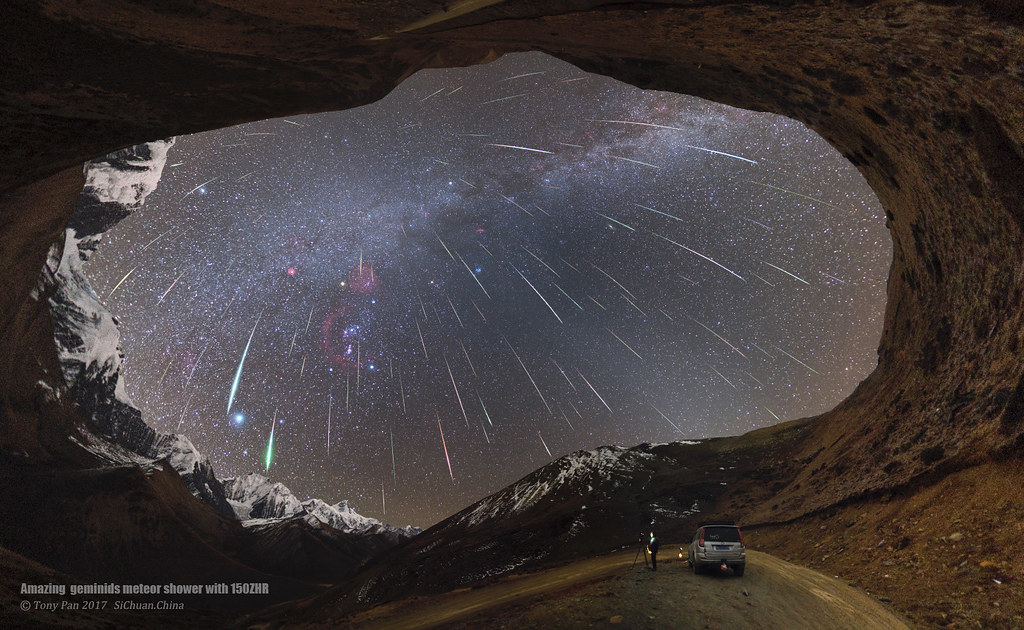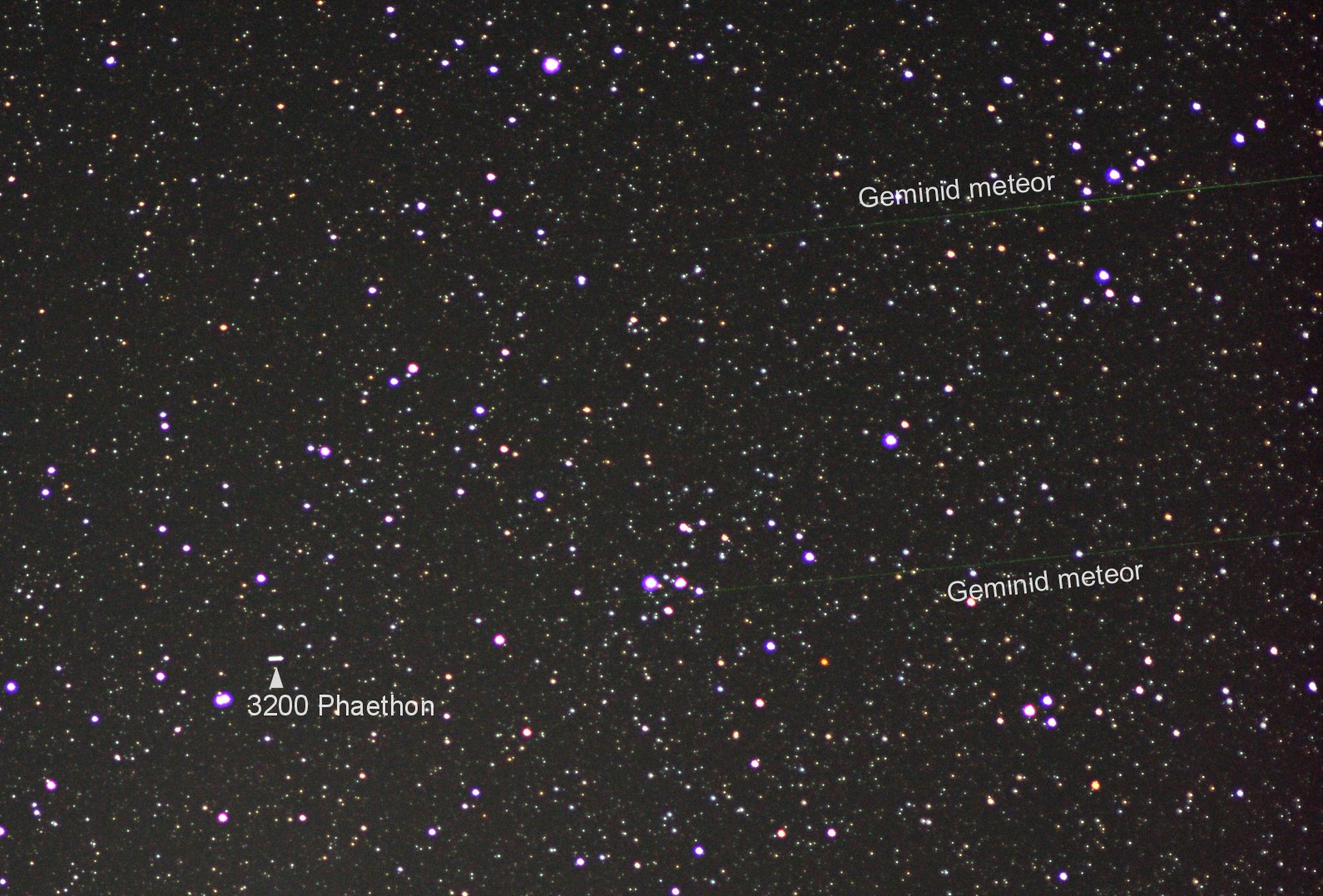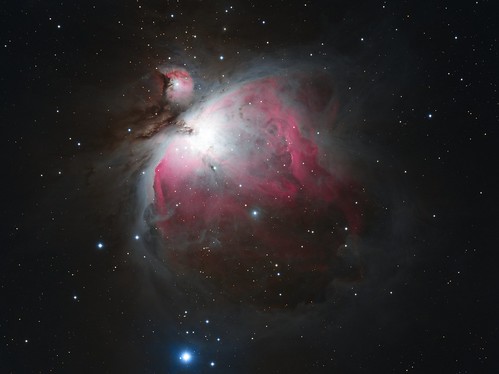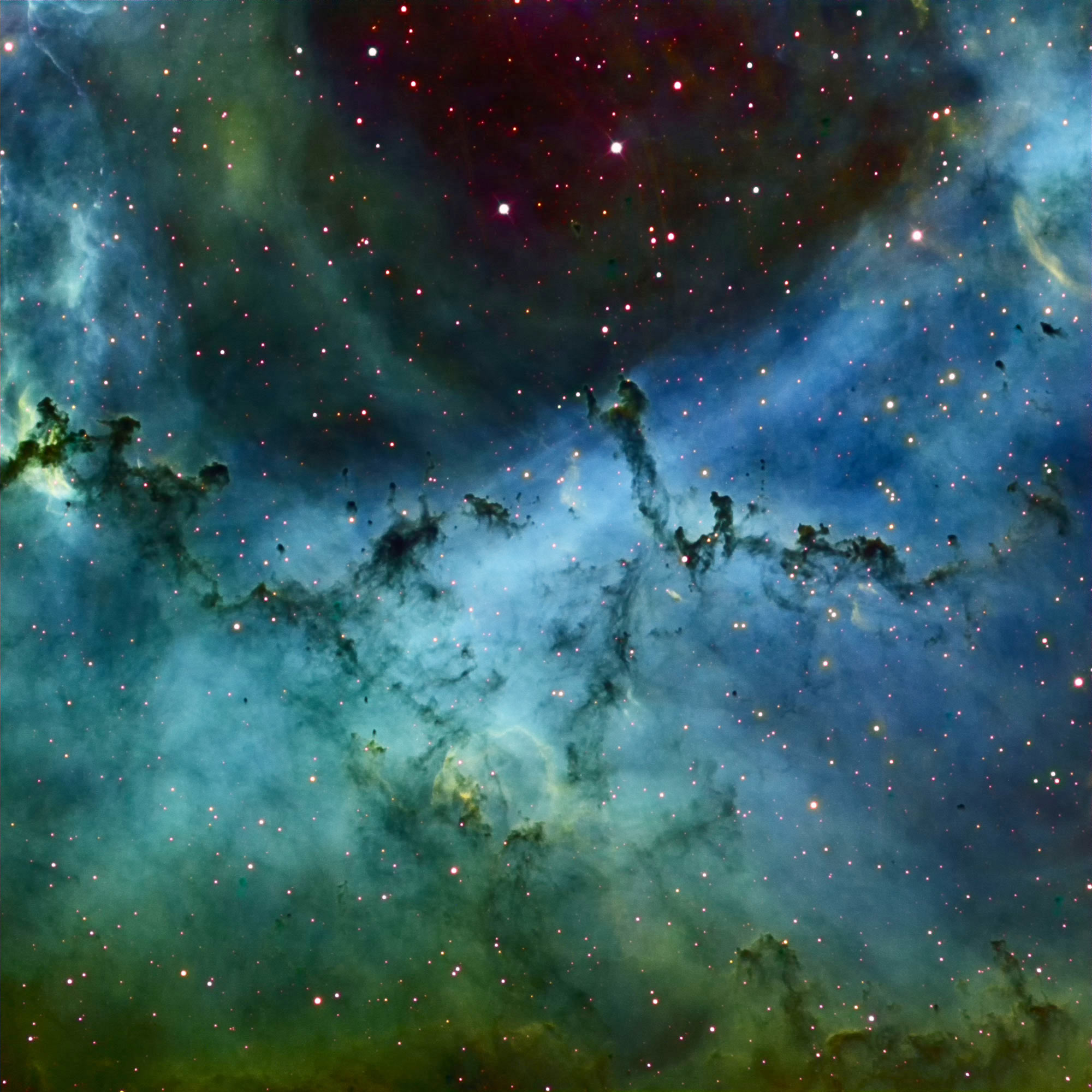Submissions: 2017 December
-
maphilli14
- Ensign
- Posts: 35
- Joined: Tue May 08, 2012 2:32 am
Re: Submissions: 2017 December
Michael A. Phillips' 2017 Solar System Bests
http://maphilli14.webs.com
Copyright: Michael A. Phillips https://i.imgur.com/UBCHhVt.png
https://i.imgur.com/pBM7eje.png
http://maphilli14.webs.com
Copyright: Michael A. Phillips https://i.imgur.com/UBCHhVt.png
https://i.imgur.com/pBM7eje.png
Last edited by bystander on Sun Dec 17, 2017 2:26 am, edited 2 times in total.
Reason: Please, no hotlinks to images > 500Kb. Uploaded as attachments.
Reason: Please, no hotlinks to images > 500Kb. Uploaded as attachments.
Re: Submissions: 2017 December
link http://spaceweathergallery.com/indiv_up ... 4588ptiir3Rolando Ligustri wrote: in twenty years as a comet photographer, it's the first time I've seen a blue one.
the "puff" that you see in N-O I think it is a remnant of the outburst a few days ago
Andromeda Galaxy & Triangle Galaxy
Copyrights: Raul Villaverde Fraile
https://www.facebook.com/raul.villaverdefraile
http://astrocentejo.wixsite.com/alcarria
https://www.flickr.com/photos/113243238@N08/
 Andromeda&Triangulo by Raul Villaverde, en Flickr
Andromeda&Triangulo by Raul Villaverde, en Flickr
https://www.facebook.com/raul.villaverdefraile
http://astrocentejo.wixsite.com/alcarria
https://www.flickr.com/photos/113243238@N08/
 Andromeda&Triangulo by Raul Villaverde, en Flickr
Andromeda&Triangulo by Raul Villaverde, en FlickrRe: Submissions: 2017 December
3200 Phaethon with two meteors from Geminids
Copyright: Steed Yu & NightChina.net

This year's Geminids meteor shower happened to coincide with the asteroid 3200 Phaethon passing near the Earth. On December 15th, I managed to capture Phaethon's movement from 16:30 to 17:30 UT against the star background. Fortunately, two meteors from Geminids came into the scene during this period. There are two galaxies in the picture, the Andromeda galaxy and the Triangulum galaxy.
Copyright: Steed Yu & NightChina.net

This year's Geminids meteor shower happened to coincide with the asteroid 3200 Phaethon passing near the Earth. On December 15th, I managed to capture Phaethon's movement from 16:30 to 17:30 UT against the star background. Fortunately, two meteors from Geminids came into the scene during this period. There are two galaxies in the picture, the Andromeda galaxy and the Triangulum galaxy.
-
checkmates
- Asternaut
- Posts: 5
- Joined: Sat Aug 05, 2017 3:47 am
Re: Submissions: 2017 December
2017 Gemini Meteor Shower (Northeast Sky Area)
http://weibo.com/checkmates
Copyright:Sun Si (Checkmates) http://wx4.sinaimg.cn/large/7027cec1ly1 ... 0qowqw.jpg
http://weibo.com/checkmates
Copyright:Sun Si (Checkmates) http://wx4.sinaimg.cn/large/7027cec1ly1 ... 0qowqw.jpg
Last edited by bystander on Mon Dec 18, 2017 4:20 pm, edited 1 time in total.
Reason: Please, no hotlinks to images > 500Kb. Uploaded as an attachment.
Reason: Please, no hotlinks to images > 500Kb. Uploaded as an attachment.
-
G.Chatzifrantzis
- Ensign
- Posts: 29
- Joined: Wed Nov 01, 2017 12:46 pm
Re: Submissions: 2017 December
IC 1805 - The Heart of Heart
Equipment :
OTA : Celestron C11 XLT
Mount : EQ8
Camera : Atik 460ex
Guiding : OAG via Lodestar X2
Filters : Baader Ha 7nm & Sii 8.5nm - Astronomik Oiii 6nm
SoftWare :
DSS - Pix - Cs
Exposure:
Ha : 9h40min
Oiii : 10h30min
Sii : 9h20min
Total : 29,5 hours
Equipment :
OTA : Celestron C11 XLT
Mount : EQ8
Camera : Atik 460ex
Guiding : OAG via Lodestar X2
Filters : Baader Ha 7nm & Sii 8.5nm - Astronomik Oiii 6nm
SoftWare :
DSS - Pix - Cs
Exposure:
Ha : 9h40min
Oiii : 10h30min
Sii : 9h20min
Total : 29,5 hours
Re: Submissions: 2017 December
I'm pleasure in sending you my pictures about "Solar analemma" and "Lunar Synodic run" for APOD selection
Description:
"A person if he observed the Moon on the sky at the same time on two consecutive days, on the second day would find it moved more to the East than the day before; to find it in the previous position it should wait another 51 minutes. This happens because the Moon, during its revolution, returns to the sky at a point very close to that of the day before on average every 24h51 minutes: this is due to the combination of the orbital movements of the Moon and the Earth. Let's see why: we define the lunar sidereal month as the interval between two successive alignments between the Moon and a star on a meridian and this time span lasts 27 days, 7 hours and 43 minutes. This value indicates the real revolution time which also corresponds to the true period of rotation around the Earth. The synodic or lunar month is the interval between two equal Moon-Sun alignments (oppositions or conjunctions) and lasts on average 29 days, 12 hours, 44 minutes. This period varies during the year and also indicates the duration of a cycle of lunar phases. The temporal difference between the synodic month and the sidereal month derives from the fact that while the Moon revolves around the Earth, the Earth-Moon couple also revolves around the Sun. If the Earth does not revolve around the Sun but remains stationary with respect to it, then the synodic month and the sidereal month would coincide. But the Earth moves around the Sun of almost 1 ° a day (360 ° / 365 days a year provides precisely ~ 1 ° a day) and then in the 27 days and beyond the sidereal month the Earth (and consequently also the Moon ) moves about 27 °. To re-align with the new moon, the Moon must rotate 360 ° + 27 ° + another 2 ° because while it travels the other 27 °, the Earth, even if slightly, has further moved.
Ultimately, while in the sidereal month the Moon must rotate around the Earth by 360 °, in the synodic month it must rotate by about 389 °: hence the different duration of the month which is 27 days in the first case and over 29 days in second, then each day must rotate for another 51 minutes in order to return to the same meridian of the day before. Here is explained why observing the Moon day by day to the same one is seen more and more moved to the East.
Intrigued and fascinated by this peculiarity of celestial mechanics, I decided to photograph the curve that the Moon describes on the celestial vault, joining the points on which it returns day by day every 24h51 minutes and waiting every time it returns to the meridian. Later I compared this curve resulting from the lunar revolution with the solar analemma that is generated during the solar revolution.
On the web I found some curves of the lunar revolution already photographed and wrongly called "lunar analemma": this is a dialectical forcing because only the "eight" curve that makes the Sun can be called "analemma" for its etymological definition. The analemma (from the Greek ανάλημμα) indicates the pedestal of the solar sundial and therefore can not be referred to the Moon. In my opinion this lunar curve should be called a "synodic curve".
I took the photos in the time period between two full moons: from the Full Moon of November 4 to that of December 3 (the highest and brightest moon of 2017 and reaching the perigee the next day), so I placed the discs on a view facing south, placing the Meridian in the middle. The result is a heart-shaped curve with the second full moon higher than the first of about two degrees. This is because, taking off in November, I was approaching the Winter Solstice; if instead I had photographed in the months following December, the second full moon would have been lower.
The shots mounted on the frame were performed every 74h33 minutes that correspond to three days plus the respective 51 minutes of the daily lunar delay. All the shots to the moon discs were performed with a DSLR Canon 5DMK3 with the EF 24-70 / 2.8 optics closed to the focal length of 30mm, while the panorama with a Sigma 14mm f / 1.8Art. With Photoshop CC I have processed the disks taken during the day, contrasting them and darkening the sky, and mounted the curve.
The solar analemma was filmed with a Canon 5DMK3 SLR with the EF 24-70 / 2.8 lens closed to the 24mm focal length, while the panorama with a Sigma 14mm f / 1.8Art, from December 1st 2016 to December 1st 2017. The shots were always performed 1h after the passage to the Meridian of the solar disk, so it is slightly tilted to the right.
The solar analemma was filmed with a Canon 5DMK3 SLR with the EF 24-70 / 2.8 optics closed to the 24mm focal length, while the panorama with a Sigma 14mm f / 1.8Art, from December 1st 2016 to December 1st 2017.The Castle on the background is The Forte Michelangelo, a fortress that protected the historic port of Civitavecchia. The fortress was begun in 1508 and completed in 1537 under the pontificate of Paul III, with the direction of Antonio da Sangallo. The main tower of the fort, was designed by Michelangelo Buonarroti, from which the name of Forte Michelangelo."
Description:
"A person if he observed the Moon on the sky at the same time on two consecutive days, on the second day would find it moved more to the East than the day before; to find it in the previous position it should wait another 51 minutes. This happens because the Moon, during its revolution, returns to the sky at a point very close to that of the day before on average every 24h51 minutes: this is due to the combination of the orbital movements of the Moon and the Earth. Let's see why: we define the lunar sidereal month as the interval between two successive alignments between the Moon and a star on a meridian and this time span lasts 27 days, 7 hours and 43 minutes. This value indicates the real revolution time which also corresponds to the true period of rotation around the Earth. The synodic or lunar month is the interval between two equal Moon-Sun alignments (oppositions or conjunctions) and lasts on average 29 days, 12 hours, 44 minutes. This period varies during the year and also indicates the duration of a cycle of lunar phases. The temporal difference between the synodic month and the sidereal month derives from the fact that while the Moon revolves around the Earth, the Earth-Moon couple also revolves around the Sun. If the Earth does not revolve around the Sun but remains stationary with respect to it, then the synodic month and the sidereal month would coincide. But the Earth moves around the Sun of almost 1 ° a day (360 ° / 365 days a year provides precisely ~ 1 ° a day) and then in the 27 days and beyond the sidereal month the Earth (and consequently also the Moon ) moves about 27 °. To re-align with the new moon, the Moon must rotate 360 ° + 27 ° + another 2 ° because while it travels the other 27 °, the Earth, even if slightly, has further moved.
Ultimately, while in the sidereal month the Moon must rotate around the Earth by 360 °, in the synodic month it must rotate by about 389 °: hence the different duration of the month which is 27 days in the first case and over 29 days in second, then each day must rotate for another 51 minutes in order to return to the same meridian of the day before. Here is explained why observing the Moon day by day to the same one is seen more and more moved to the East.
Intrigued and fascinated by this peculiarity of celestial mechanics, I decided to photograph the curve that the Moon describes on the celestial vault, joining the points on which it returns day by day every 24h51 minutes and waiting every time it returns to the meridian. Later I compared this curve resulting from the lunar revolution with the solar analemma that is generated during the solar revolution.
On the web I found some curves of the lunar revolution already photographed and wrongly called "lunar analemma": this is a dialectical forcing because only the "eight" curve that makes the Sun can be called "analemma" for its etymological definition. The analemma (from the Greek ανάλημμα) indicates the pedestal of the solar sundial and therefore can not be referred to the Moon. In my opinion this lunar curve should be called a "synodic curve".
I took the photos in the time period between two full moons: from the Full Moon of November 4 to that of December 3 (the highest and brightest moon of 2017 and reaching the perigee the next day), so I placed the discs on a view facing south, placing the Meridian in the middle. The result is a heart-shaped curve with the second full moon higher than the first of about two degrees. This is because, taking off in November, I was approaching the Winter Solstice; if instead I had photographed in the months following December, the second full moon would have been lower.
The shots mounted on the frame were performed every 74h33 minutes that correspond to three days plus the respective 51 minutes of the daily lunar delay. All the shots to the moon discs were performed with a DSLR Canon 5DMK3 with the EF 24-70 / 2.8 optics closed to the focal length of 30mm, while the panorama with a Sigma 14mm f / 1.8Art. With Photoshop CC I have processed the disks taken during the day, contrasting them and darkening the sky, and mounted the curve.
The solar analemma was filmed with a Canon 5DMK3 SLR with the EF 24-70 / 2.8 lens closed to the 24mm focal length, while the panorama with a Sigma 14mm f / 1.8Art, from December 1st 2016 to December 1st 2017. The shots were always performed 1h after the passage to the Meridian of the solar disk, so it is slightly tilted to the right.
The solar analemma was filmed with a Canon 5DMK3 SLR with the EF 24-70 / 2.8 optics closed to the 24mm focal length, while the panorama with a Sigma 14mm f / 1.8Art, from December 1st 2016 to December 1st 2017.The Castle on the background is The Forte Michelangelo, a fortress that protected the historic port of Civitavecchia. The fortress was begun in 1508 and completed in 1537 under the pontificate of Paul III, with the direction of Antonio da Sangallo. The main tower of the fort, was designed by Michelangelo Buonarroti, from which the name of Forte Michelangelo."
Re: Submissions: 2017 December
Amazing, astroligu.astroligu wrote:link http://spaceweathergallery.com/indiv_up ... 4588ptiir3Rolando Ligustri wrote: in twenty years as a comet photographer, it's the first time I've seen a blue one.
the "puff" that you see in N-O I think it is a remnant of the outburst a few days ago
What can the reason be? I would love to know!
Ann
Color Commentator
Re: Submissions: 2017 December
A Gem near the head of Orion, Barnard 30/LDN 1577/CED51
Copyright: Jon Talbot
Full res image and exposure information is available here: http://www.starscapeimaging.com/page217/index.html
Copyright: Jon Talbot
Full res image and exposure information is available here: http://www.starscapeimaging.com/page217/index.html
Re: Submissions: 2017 December
Amazing geminid meteor shower with 150+ZHR
https://www.flickr.com/photos/tonypysm/
Copyright: Tony Pan Larger:https://www.flickr.com/photos/tonypysm/25270600018/
https://www.flickr.com/photos/tonypysm/
Copyright: Tony Pan Larger:https://www.flickr.com/photos/tonypysm/25270600018/
Re: Submissions: 2017 December
Hi,
Sadr Region's.
Equipment: ED80 + QHY163M
Location: Silvania / GO / Brazil
Regards,
Delberson.
Sadr Region's.
Equipment: ED80 + QHY163M
Location: Silvania / GO / Brazil
Regards,
Delberson.
Re: Submissions: 2017 December
Hi,
Trifid Nebula - Messier 20.
Equipment: ED80 + QHY163M
Location: Silvania / GO / Brazil
Regards,
Delberson.
Trifid Nebula - Messier 20.
Equipment: ED80 + QHY163M
Location: Silvania / GO / Brazil
Regards,
Delberson.
-
KuriousGeorge
- Science Officer
- Posts: 218
- Joined: Wed Dec 30, 2015 7:07 am
- Location: San Diego, CA
- Contact:
Re: Submissions: 2017 December
Sh2-290 (Abell 31). KG Observatory.
Sh2-290 or Abell 31 is an ancient planetary nebula about 2,000 light years distant. A planetary nebula is created when a low-mass star blows off its outer layers at the end of its life. Sh2-290 is one of the largest known planetary nebulae, with a diameter of about 7 parsecs. The bluish interior is from energized oxygen atoms. The bright side of the nebula is due to its interaction with ambient interstellar gas.
Imaging telescope or lens: Celestron 8" EdgeHD
Imaging camera: QSI 660 WSG
Mount: Losmandy G-11
Guiding camera: Starlight Xpress Ultrastar
Focal reducer: Celestron 0.7X
Software: PixInsight 1.8, PHD Guiding 2, Neat Image V7, Photoshop CS3, Sequence Generator Pro, Maxim DL6
Filters: Astrodon 1.25" 3nm OIII, Astrodon 1.25" 5nm Ha
Accessories: Innovations Foresight ONAG SC, Optec FocusLock, Starizona MicroTouch Autofocuser
Resolution: 2730x2159
Dates: Dec. 13, 2017, Dec. 18, 2017
Frames:
Astrodon 1.25" 3nm OIII: 26x900" -15C bin 1x1
Astrodon 1.25" 5nm Ha: 30x900" -15C bin 1x1
Integration: 14.0 hours
Darks: ~20
Flats: ~40
Flat darks: ~40
Bias: ~20
Avg. Moon age: 12.70 days
Avg. Moon phase: 9.91%
Mean SQM: 19.50
Locations: Home, Rancho Santa Fe, California, United States
Sh2-290 or Abell 31 is an ancient planetary nebula about 2,000 light years distant. A planetary nebula is created when a low-mass star blows off its outer layers at the end of its life. Sh2-290 is one of the largest known planetary nebulae, with a diameter of about 7 parsecs. The bluish interior is from energized oxygen atoms. The bright side of the nebula is due to its interaction with ambient interstellar gas.
Imaging telescope or lens: Celestron 8" EdgeHD
Imaging camera: QSI 660 WSG
Mount: Losmandy G-11
Guiding camera: Starlight Xpress Ultrastar
Focal reducer: Celestron 0.7X
Software: PixInsight 1.8, PHD Guiding 2, Neat Image V7, Photoshop CS3, Sequence Generator Pro, Maxim DL6
Filters: Astrodon 1.25" 3nm OIII, Astrodon 1.25" 5nm Ha
Accessories: Innovations Foresight ONAG SC, Optec FocusLock, Starizona MicroTouch Autofocuser
Resolution: 2730x2159
Dates: Dec. 13, 2017, Dec. 18, 2017
Frames:
Astrodon 1.25" 3nm OIII: 26x900" -15C bin 1x1
Astrodon 1.25" 5nm Ha: 30x900" -15C bin 1x1
Integration: 14.0 hours
Darks: ~20
Flats: ~40
Flat darks: ~40
Bias: ~20
Avg. Moon age: 12.70 days
Avg. Moon phase: 9.91%
Mean SQM: 19.50
Locations: Home, Rancho Santa Fe, California, United States
- moonrocks
- Science Officer
- Posts: 119
- Joined: Tue Jun 30, 2015 6:50 pm
- Location: spain, valencia
- Contact:
Re: Submissions: 2017 December
Cosmic Christmas from Orion
Hope you enjoy this Christmas tree with its running angle perched high above on a bejeweled nebular tree.
URL of website, http://moonrocksastro.com/wp-content/up ... lished.jpg
Copyright: Paul C Swift
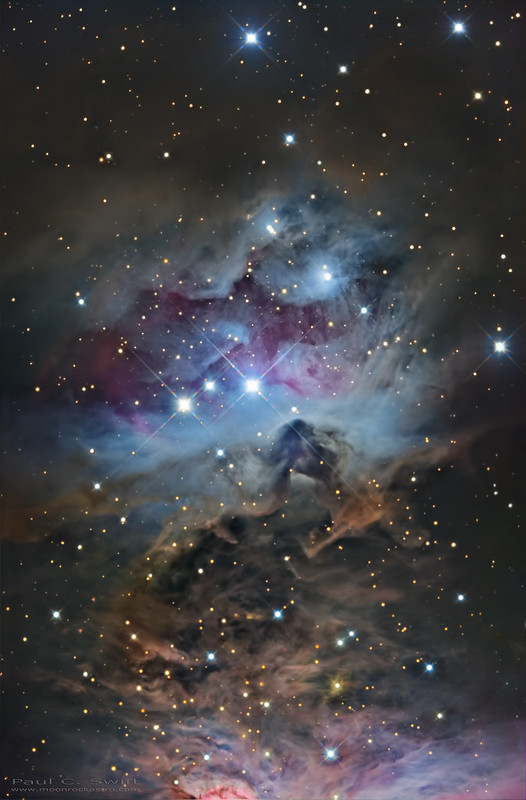 Cosmic Christmas from Orion by Paul C. Swift, on Flickr
Cosmic Christmas from Orion by Paul C. Swift, on Flickr
Hope you enjoy this Christmas tree with its running angle perched high above on a bejeweled nebular tree.
URL of website, http://moonrocksastro.com/wp-content/up ... lished.jpg
Copyright: Paul C Swift
 Cosmic Christmas from Orion by Paul C. Swift, on Flickr
Cosmic Christmas from Orion by Paul C. Swift, on Flickr-
Hermann von Eiff
- Ensign
- Posts: 43
- Joined: Mon Sep 26, 2016 5:48 pm
Re: Submissions: 2017 December
IC 5146 - The Cocoon Nebula
Copyright: Hermann von Eiff
Copyright: Hermann von Eiff
Re: Submissions: 2017 December
NGC 247 is an intermediate spiral Galaxy located in the constellation Cetus. It is a member of the sculptor group and is located approximately 11.1 million light years away. The most striking feature of this Galaxy, the void, contain stars that are different from those around. They are older, redder and colour, and much fainter. This suggests that the star formation within the void has been arrested. It is believed that star formation slowed a billion years ago. We are still unsure how the void has formed. Recent studies suggest it might have been caused by gravitational interactions with another galaxy, or even a recent interaction with a nearly dark subhalo that collided with the disc.
The centre of the Galaxy is visible as a bright whitish patch surrounded by mixture of stars, gas, and dust. Silhouetted against the background of stars the dust and gas has formed interesting filaments.
The best month for viewing NGC 247 is in November when it is at its highest altitude. It has an apparent magnitude of 9.9, and an apparent size of 21'.4 × 6'.9. NGC247 is also known as ESO 540-22, C 62, IRAS 00446-2101, MCG -4-3-5, PGC 2758, UGCA 11.

Image Details
Center (RA, hms): 00h 47m 19.577s
Center (Dec, dms): -20° 43' 59.305"
Size: 47.8 x 31.8 arcmin
Radius: 0.478 deg
Pixel scale: 0.804 arcsec/pixel
Orientation: Up is 118 degrees E of N
Instruments:
10 Inch RCOS fl 9.1
Astro Physics AP-900 Mount
SBIG STL 11000m
FLI Filter Wheel
Astrodon Lum, Red, Green, Blue Filters
Baader Planetarium H-alpha 7nm Narrowband-Filter
Exposure Details:
37 X 900 Bin 1X1 Lum
21 X 450 Bin 2X2 Red
21 X 450 Bin 2X2 Green
22 X 450 Bin 2X2 Blue
13 X 900 Bin 1X1 Ha
Total time: 20.5 hours
Location
Australia, Central Victoria
Imaged from May-June 2017
The centre of the Galaxy is visible as a bright whitish patch surrounded by mixture of stars, gas, and dust. Silhouetted against the background of stars the dust and gas has formed interesting filaments.
The best month for viewing NGC 247 is in November when it is at its highest altitude. It has an apparent magnitude of 9.9, and an apparent size of 21'.4 × 6'.9. NGC247 is also known as ESO 540-22, C 62, IRAS 00446-2101, MCG -4-3-5, PGC 2758, UGCA 11.

Image Details
Center (RA, hms): 00h 47m 19.577s
Center (Dec, dms): -20° 43' 59.305"
Size: 47.8 x 31.8 arcmin
Radius: 0.478 deg
Pixel scale: 0.804 arcsec/pixel
Orientation: Up is 118 degrees E of N
Instruments:
10 Inch RCOS fl 9.1
Astro Physics AP-900 Mount
SBIG STL 11000m
FLI Filter Wheel
Astrodon Lum, Red, Green, Blue Filters
Baader Planetarium H-alpha 7nm Narrowband-Filter
Exposure Details:
37 X 900 Bin 1X1 Lum
21 X 450 Bin 2X2 Red
21 X 450 Bin 2X2 Green
22 X 450 Bin 2X2 Blue
13 X 900 Bin 1X1 Ha
Total time: 20.5 hours
Location
Australia, Central Victoria
Imaged from May-June 2017
Collecting Photons.....
Images Gallery
https://www.astrobin.com/users/trobison/
https://www.flickr.com/photos/97807083@ ... 6565068452
Images Gallery
https://www.astrobin.com/users/trobison/
https://www.flickr.com/photos/97807083@ ... 6565068452
Re: Submissions: 2017 December
comets on a photograph of the comet panstarrs C/2011 L4
-
SpookyAstro
- Science Officer
- Posts: 117
- Joined: Sat Feb 07, 2015 7:38 pm
Re: Submissions: 2017 December
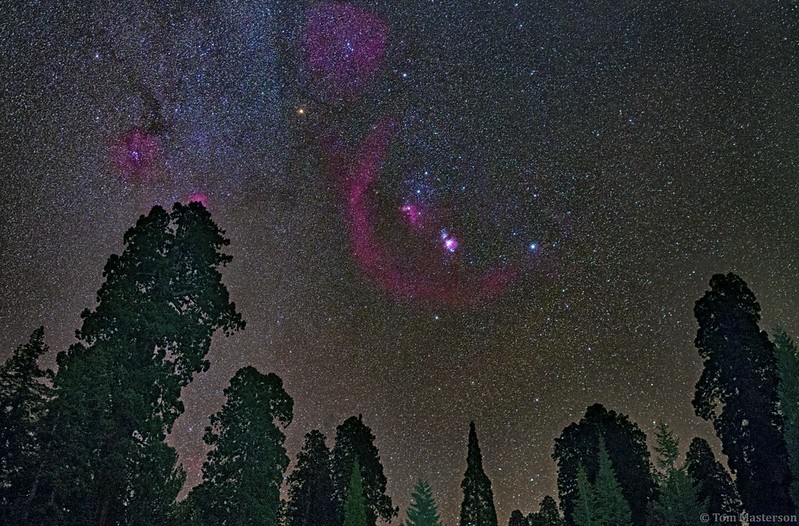 Orion Rises Over The Giant Sequoias by Transient Astronomer, on Flickr
Orion Rises Over The Giant Sequoias by Transient Astronomer, on FlickrImage Credit and Copyright Tom Masterson
Re: Submissions: 2017 December
Messier 106 and some friends.
Larger version:
http://www.pbase.com/tango33/image/166701745
Thank you for looking!
Kfir Simon
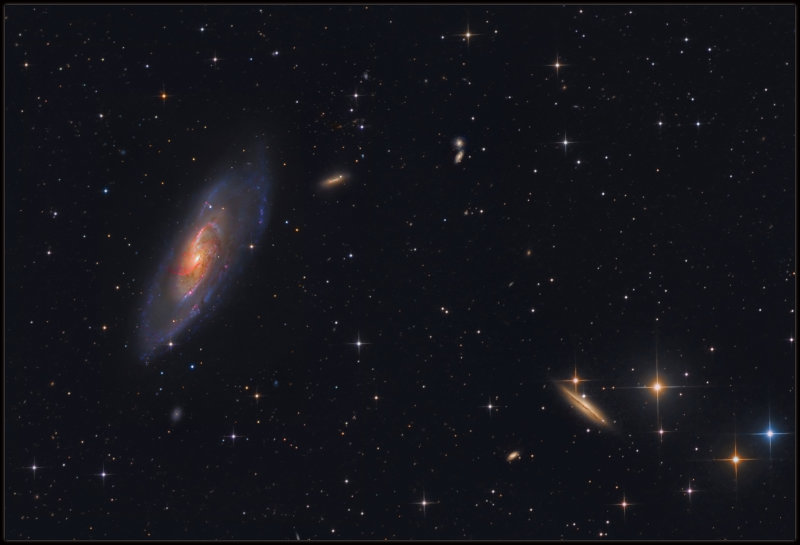
Larger version:
http://www.pbase.com/tango33/image/166701745
Thank you for looking!
Kfir Simon

-
barretosmed
- Science Officer
- Posts: 482
- Joined: Thu Oct 12, 2017 6:04 pm
Re: Submissions: 2017 December
SIRUS A AND B
Located in the constellation of Canis Major, Sirus A and B, it belongs to a binary system, separated between them by the estimated distance between Earth and Uranus.
1) https://www.astrobin.com/full/326680/0/?nc=user
2)https://www.astrobin.com/full/326677/0/
Copyright: Fernando Oliveira de Menezes
EQUIPAMENTS: CELESTRON C11, ASI 290 mm
Local: São Paulo– SP - BR
Date: 12-17-2017
Located in the constellation of Canis Major, Sirus A and B, it belongs to a binary system, separated between them by the estimated distance between Earth and Uranus.
1) https://www.astrobin.com/full/326680/0/?nc=user
2)https://www.astrobin.com/full/326677/0/
Copyright: Fernando Oliveira de Menezes
EQUIPAMENTS: CELESTRON C11, ASI 290 mm
Local: São Paulo– SP - BR
Date: 12-17-2017
- felopaul
- Ensign
- Posts: 97
- Joined: Mon Apr 29, 2013 7:14 pm
- AKA: Felopaul
- Location: Flagey (France)
- Contact:
Re: Submissions: 2017 December
IC 1848
full size : http://www.cielboreal.com/galerie/photo75f.jpg
total frame 47Hr done with CDK20 on Paramount ME2 with Moravan G4 in Flagey , France
http://www.cielboreal.com
Copyright: Team CielBoreal with J.C CANONNE, P. BERNHARD, D. CHAPLAIN & L. BOURGON
full size : http://www.cielboreal.com/galerie/photo75f.jpg
total frame 47Hr done with CDK20 on Paramount ME2 with Moravan G4 in Flagey , France
http://www.cielboreal.com
Copyright: Team CielBoreal with J.C CANONNE, P. BERNHARD, D. CHAPLAIN & L. BOURGON
-
SpookyAstro
- Science Officer
- Posts: 117
- Joined: Sat Feb 07, 2015 7:38 pm
Re: Submissions: 2017 December
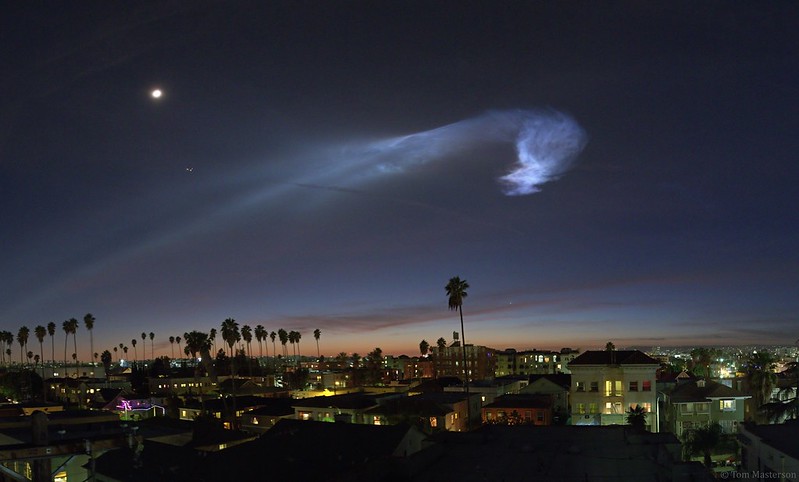 SpaceX Falcon 9 Launch of Iridum-4 over Los Angeles 12/22/2017 by Transient Astronomer, on Flickr
SpaceX Falcon 9 Launch of Iridum-4 over Los Angeles 12/22/2017 by Transient Astronomer, on FlickrImage Credit and Copyright Tom Masterson
-
mikiclinic
- Ensign
- Posts: 46
- Joined: Tue Oct 18, 2011 3:36 pm
Re: Submissions: 2017 December
Detail of NGC2239
This image was taken with 20inch RC telescope(officina stella PRO-500) and KAF 09000 cooled CCD camera(FLI).
ASTRODON 3nm narrow band filter S2/HA/O3 300min/420min/300min:Total 17hours.
http://miki-hosp.or.jp/BIND/
Copyright: Nobuhiko MIKI
This image was taken with 20inch RC telescope(officina stella PRO-500) and KAF 09000 cooled CCD camera(FLI).
ASTRODON 3nm narrow band filter S2/HA/O3 300min/420min/300min:Total 17hours.
http://miki-hosp.or.jp/BIND/
Copyright: Nobuhiko MIKI
